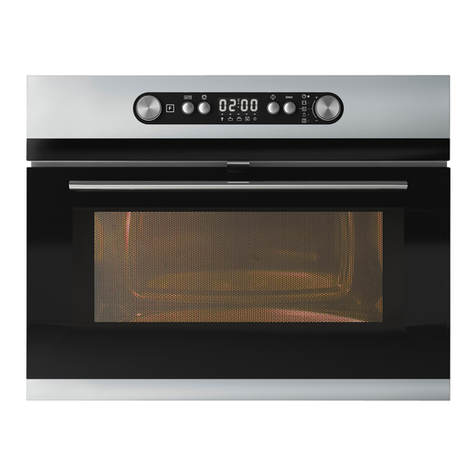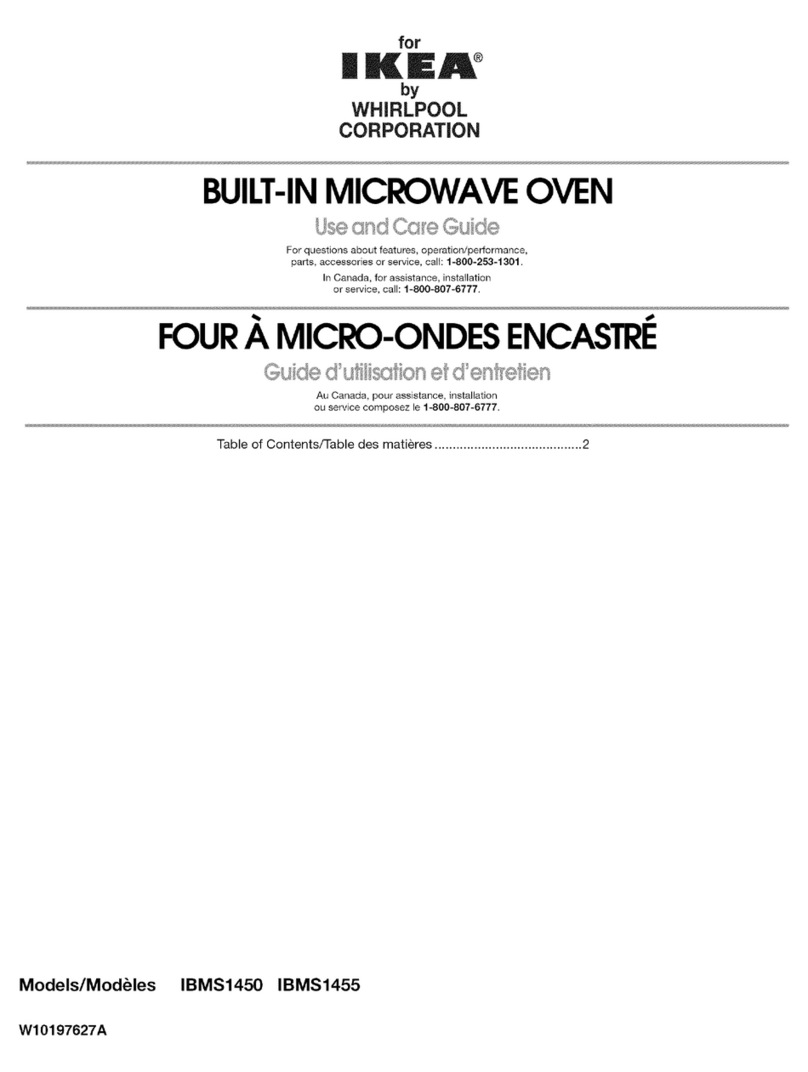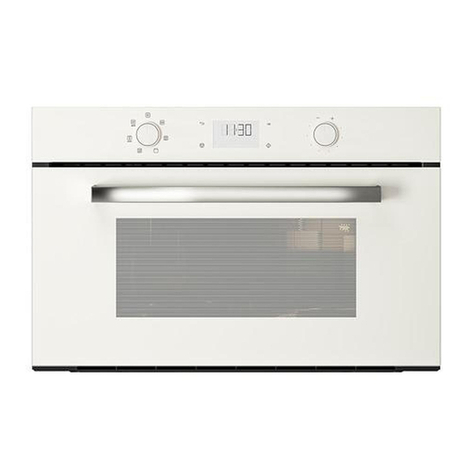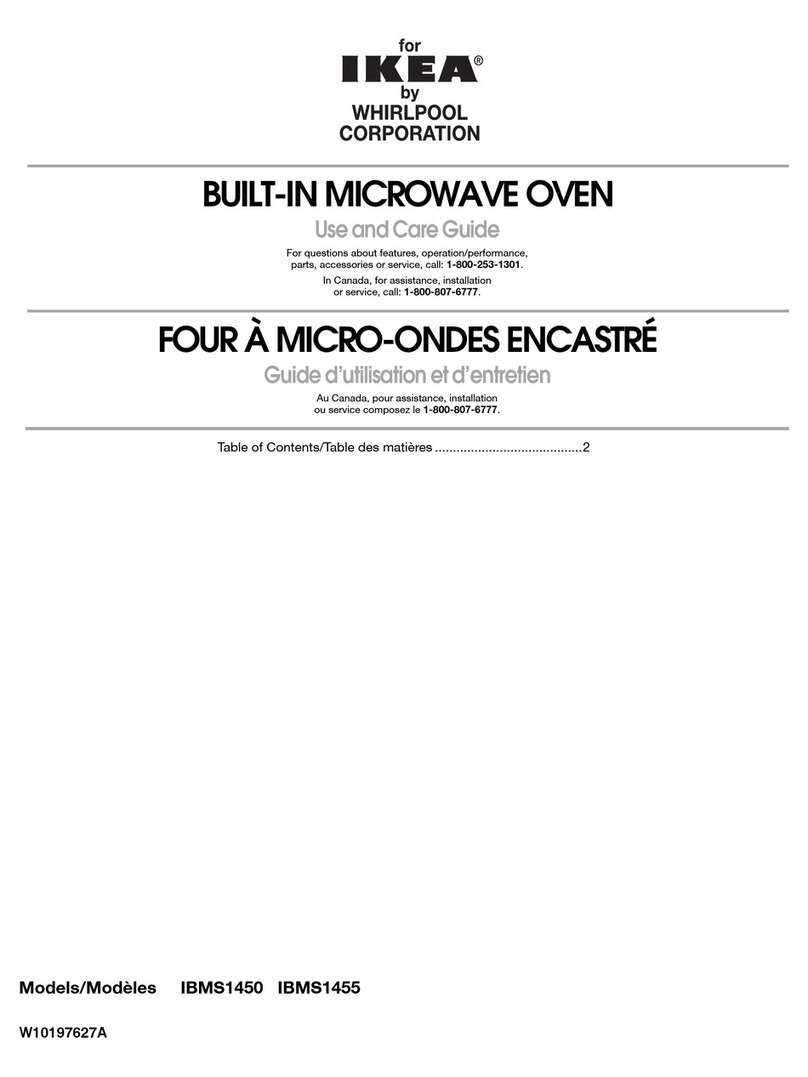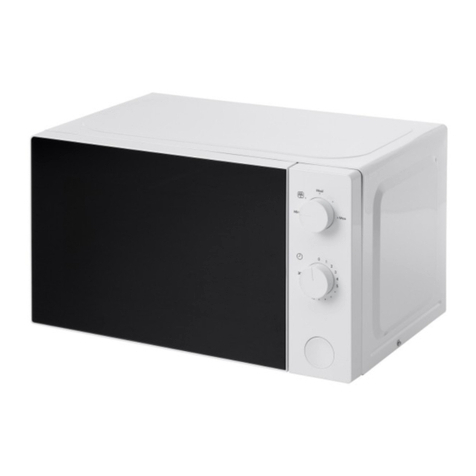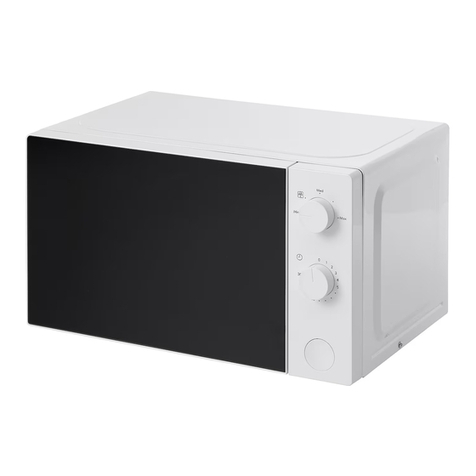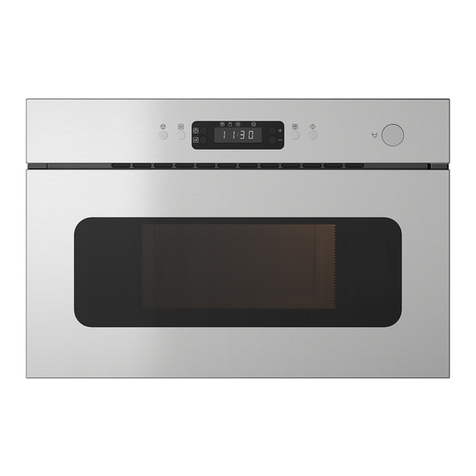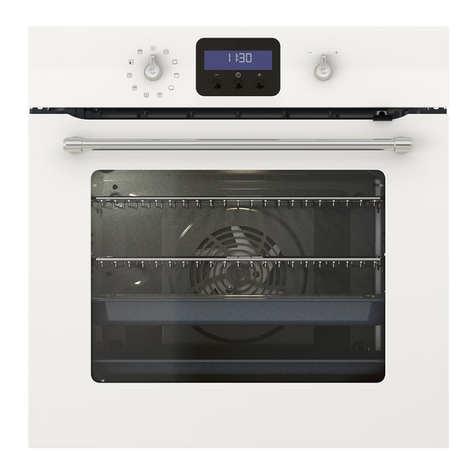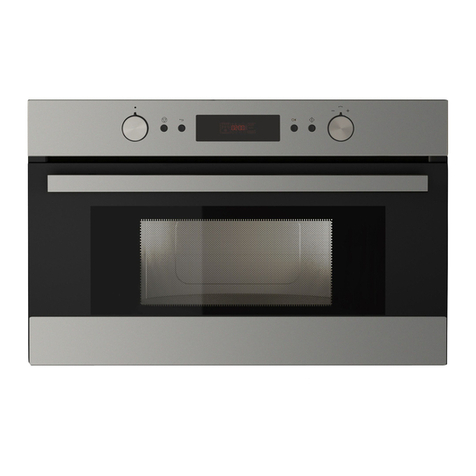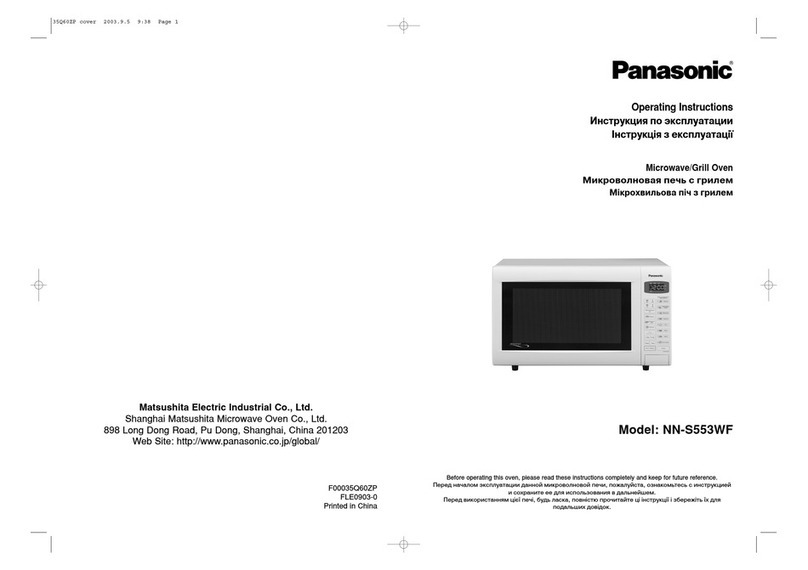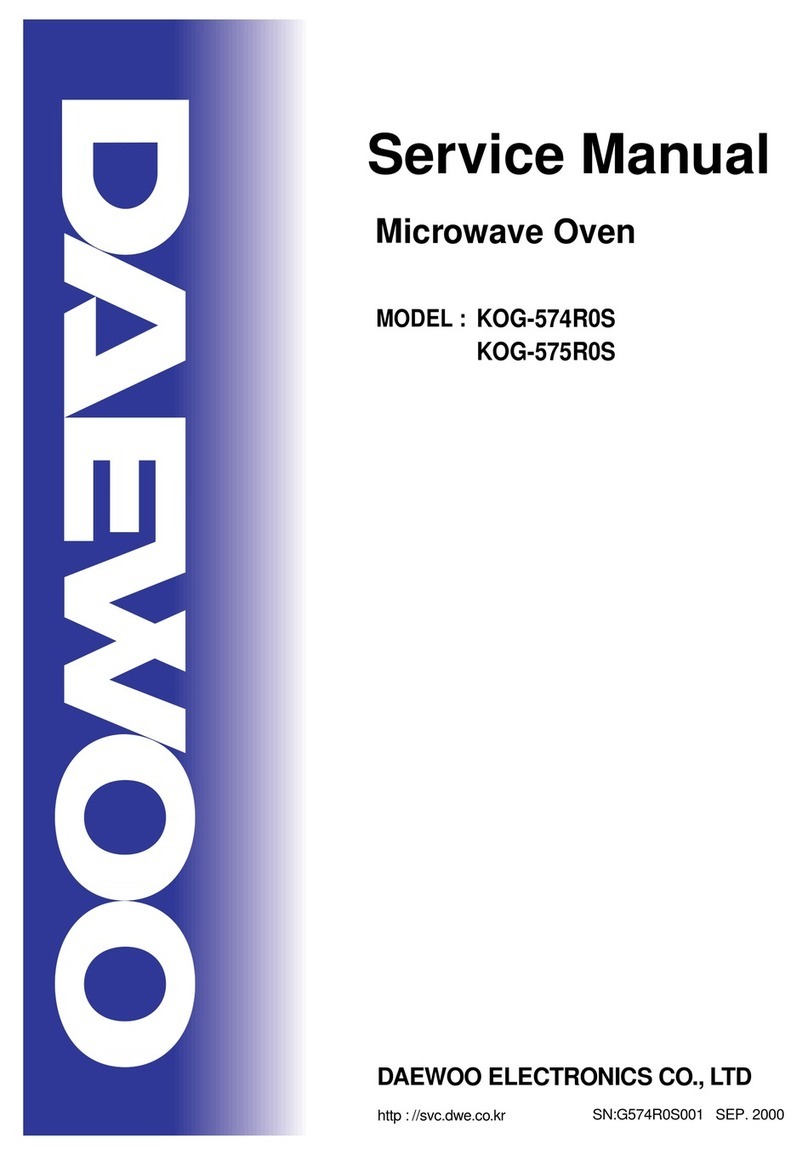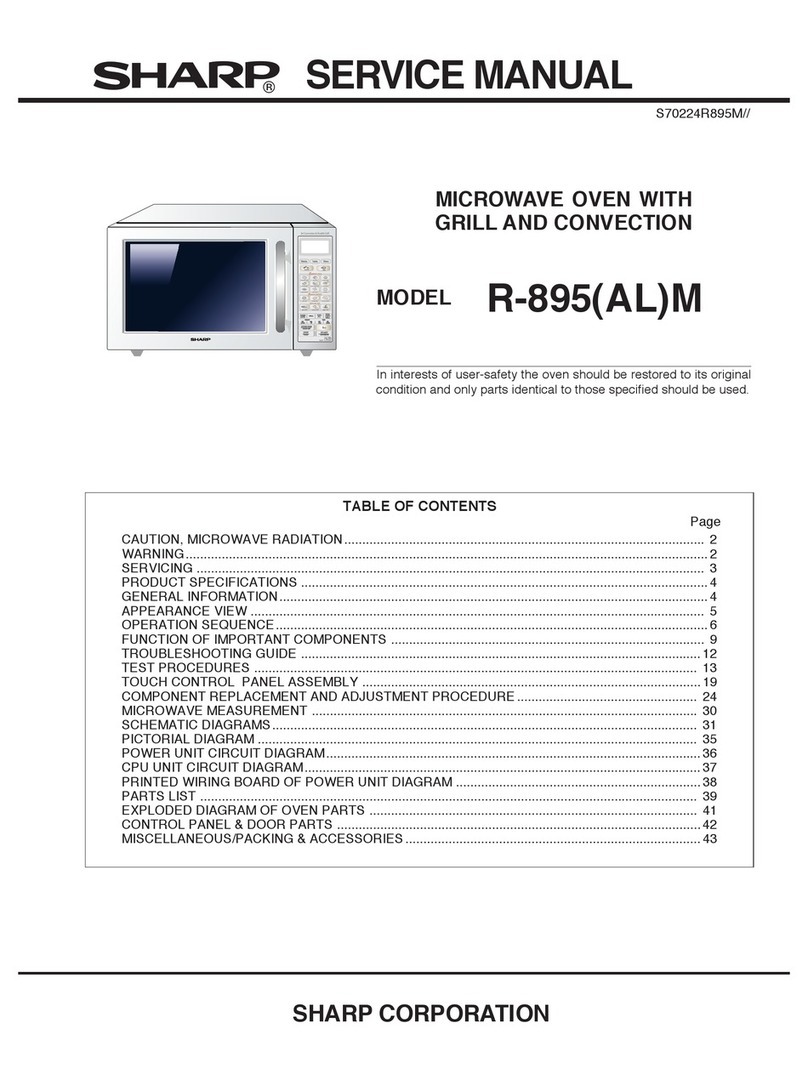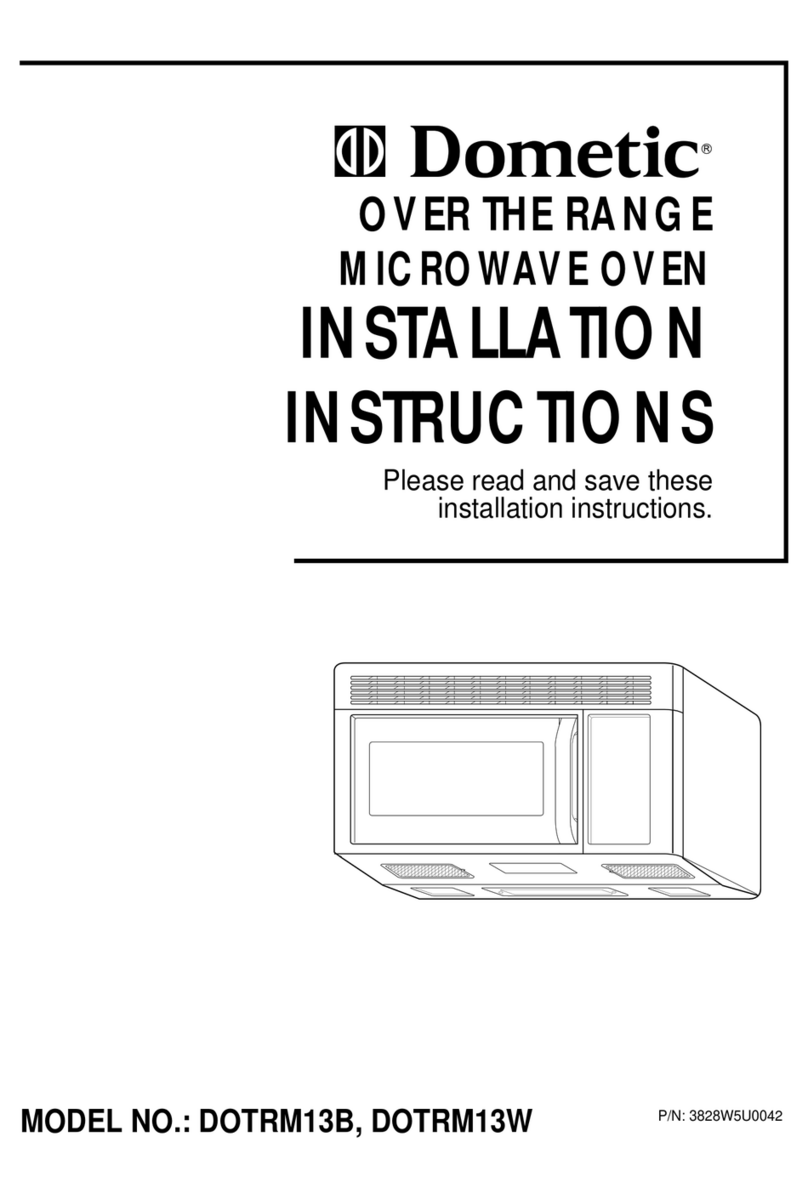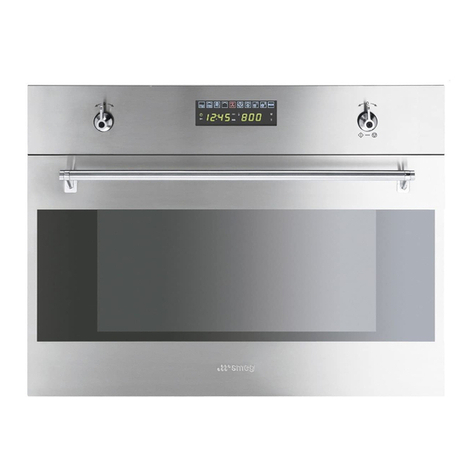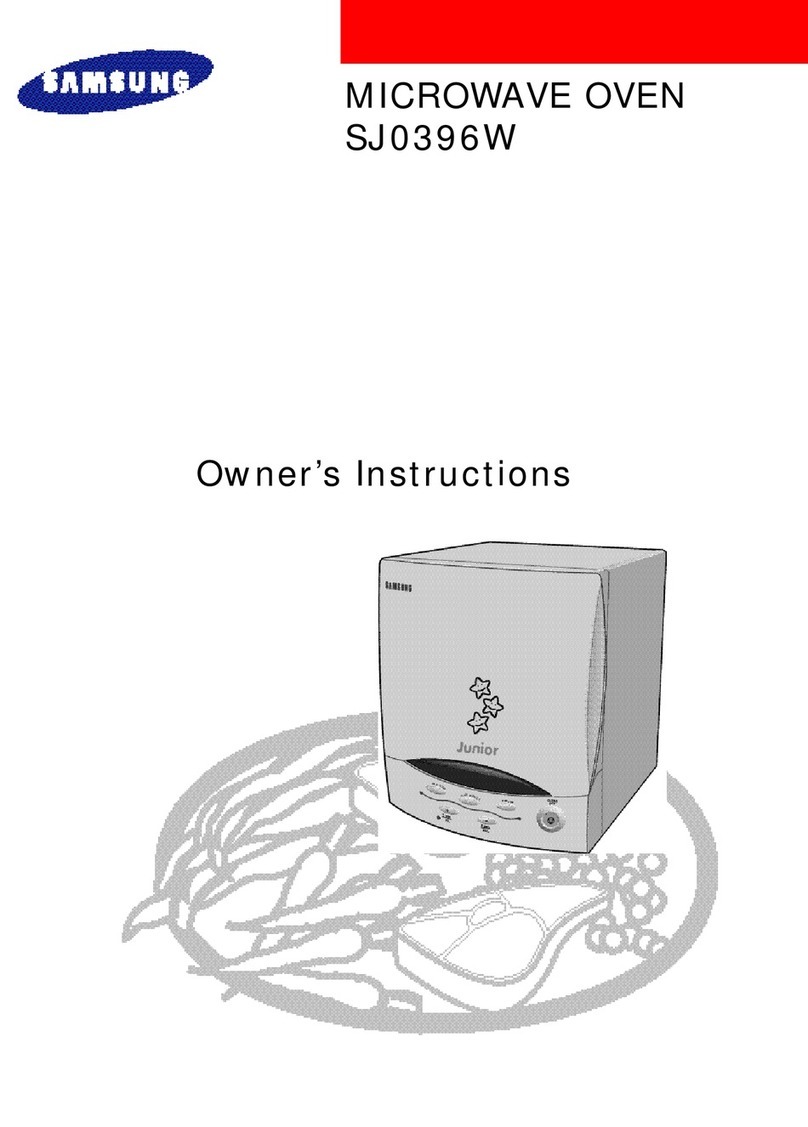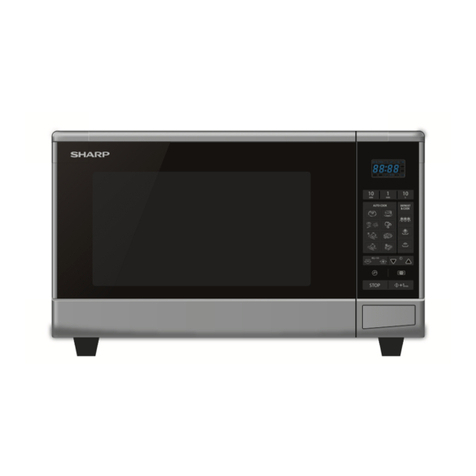
• Read all instructions before using the appliance.
AVOID POSSIBLE EXPOSURE TO EXCESSIVE
• This appliance must be grounded. Connect only
to properly grounded outlet. See "GROUNDING
• Install or locate this appliance only in accordance with
• Some products such as whole eggs and sealed
containers —for example, closed glass jars—are
able to explode and should not be heated in this
microwave oven.
• Use this appliance only for its intended use as
described in this manual. Do not use corrosive
chemicals or vapors in this appliance. This type of
microwave oven is speci cally designed to heat,
cook or dry food. It is not designed for industrial or
laboratory use.
• As with any appliance, close supervision is necessary
when used by children.
cord or plug, if it is not working properly or if it has
been damaged or dropped.
• Do not cover or block any openings on the appliance.
use this product near water—for example, near a
kitchen sink, in a wet basement or near a swimming
pool, or similar locations.
• Do not immerse cord or plug in water.
• Keep cord away from heated surfaces.
• Do not let cord hang over edge of table or counter.
• Do not mount over a sink.
• Do not store anything directly on top of the appliance
surface when the appliance is in operation.
-Remove wire twist-ties from paper or plastic bags
before placing bag in microwave oven.
-If materials inside the microwave oven ignite,
keep microwave oven door closed, turn
microwave oven off and disconnect the power
cord or shut off power at the fuse or circuit
breaker panel.
- Do not use the cavity for storage purposes. Do not
leave paper products, cooking utensils or food in
the cavity when not in use.
• Liquids, such as water, coffee or tea are able to
be overheated beyond the boiling point without
appearing to be boiling. Visible bubbling or boiling
when the container is removed from the microwave
oven is not always present. THIS COULD RESULT
IN VERY HOT LIQUIDS SUDDENLY BOILING
OVER WHEN A SPOON OR OTHER UTENSIL IS
INSERTED INTO THE LIQUID.
To reduce the risk of injury to persons:
-Do not overheat the liquid.
- Stir the liquid both before and halfway through
heating it.
- Do not use straight-sided containers with narrow
necks. Use a wide-mouthed container.
- After heating, allow the container to stand in the
microwave oven at least for 20 seconds before
removing the container.
- Use extreme care when inserting a spoon or other
utensil into the container.
frequently. Grease should not be allowed to
accumulate on ventilation openings, louver or grease
• Use care when cleaning the louver and the grease
oven cleaners, may damage the louver and the
• This appliance is suitable for use above both gas and
• Do not clean with metal scouring pads. Pieces off the
pad can touch electrical parts involving risk of electric
shock.
SAVE THESE INSTRUCTIONS.
WARNING
If you see arcing, press the Cancel button and
correct the problem.
EN
IMPORTANT SAFETY INSTRUCTIONS
• When flaming food under the hood, turn the fan on.
grease filters.
1) Oversized food or oversized metal utensils should not
be inserted in a microwave/toaster oven as they may
create a fire or risk of electric shock.
2) Do not clean with metal scouring pads. Pieces can
burn off the pad and touch electrical parts involving
a risk of electric shock.
3) Do not use paper products when appliance is
operated in the toaster mode.
4) Do not store any materials, other than manufacturer’s
recommended accessories, in this oven when not in
use.
5) Do not cover racks or any other part of the oven with
metal foil. This will cause overheating of the oven.
This is the safety alert symbol. It is used to alert
you to potential personal injury hazards. Obey all
safety messages that follow this symbol to avoid
possible injury or death.
WARNING
WARNING indicates a potentially hazardous
situation which, if not avoided, could result in death
or serious injury.
CAUTION
CAUTION indicates a potentially hazardous situation
which, if not avoided, may result in minor or
moderate injury.
- Do not overcook food. Carefully attend
appliance when paper, plastic or other
combustible materials are placed inside the
microwave oven to facilitate cooking.
READ ALL INFORMATION BEFORE USING
WARNING
to persons, or exposure to excessive microwave
energy when using your appliance, follow basic
precautions, including the following sections.
the provided assembly instructions.
• Do not store or use this appliance outdoors. Do not
for examination, repair or adjustment.
• Clean ventilation openings and grease filters
filters.
filters. Corrosive cleaning agents, such as lye-based
electric cooking equipment 30" wide.
Denitions
To reduce the risk of fire, burns, electric shock, injury
• Read and follow the specific "PRECAUTIONS TO
MICROWAVE ENERGY" on page 3.
INSTRUCTIONS" on page 5-6.
service personnel. Contact (833) 337-4006
• Do not operate this appliance if it has a damaged
• This appliance should be serviced only by qualified
• See door surface cleaning instructions on page 22.
• To reduce the risk of fire in the microwave oven cavity:
